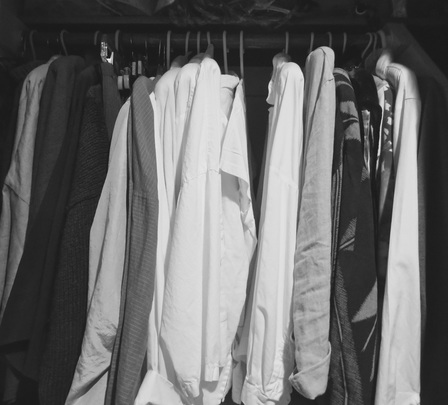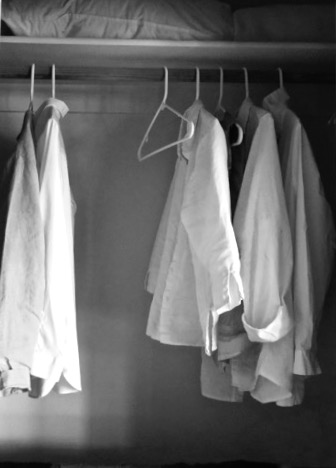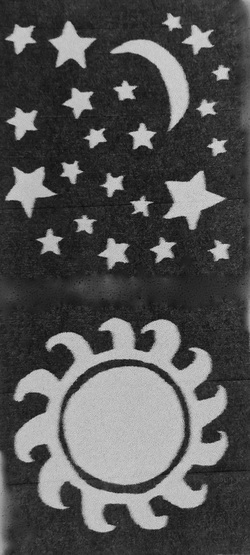
Thus saith our Heroine in her personal version of Ecclesiastes:
To every season there is a new white cotton shirt or black cashmere turtleneck sweater. A time to get, and a time to lose because I no longer fit into what I bought last season; a time to keep the XLarge duds, and a time to cast away the too-small stuff to a shelter for battered women.
Better is a handful with quietness, than both hands full with doodads I can live without. Give a portion to seven, and also to eight; for it is a pleasant thing for the eyes to behold the sun, shining on the tchotchke-free tabletop.
Enter Feng Shui, an ancient Chinese philosophy that appeals greatly to our Heroine. Feng Shui, that posits the auspicious placement of rooms and the uncluttered arrangement of furniture creates harmony between man and nature, thereby bringing increased happiness to our lives.
She buys, our Heroine does, Feng Shui’s concept of chi, the vital energy that flows through the universe. She believes, as do the Feng Shui masters, that blocked chi creates stress and illness, while a smooth flow of chi increases good health, improved relationships and longevity. Wow, says she. A balanced life, and all we need do is relocate
a desk or jettison our junk? I’m in.
Our Heroine recognizes that on the face of it, Feng Shui is antithetical to Jewish tradition which does not cotton to divination and magic. Still, could one apply a few Feng Shui principles to the quintessential Jewish space -- the Tabernacle in the Wilderness -- and also to the Jewish home, our personal sanctuaries? One could. And so, our Heroine does. To wit:
The Book of Exodus tells us that God handed Moses specific blueprints for the construction of the Tabernacle. The plans called for the Tabernacle to be positioned with the long sides facing north and south, one short side facing west and the other short wall -- the entrance -- facing east. Each time the Israelites pulled up stakes,
the Tabernacle was dismantled and then re-laid in a classic Feng Shui orientation, directly east and west, which guaranteed the Tabernacle would absorb beneficial energy from the rising sun. And with each move of the Tabernacle, the twelve tribes
set up camp around the structure, their flags swirling in the desert wind, blessing the area with a constant flow of positive chi. A word, our Heroine suggests, that looks very much like chai.
Also conforming to Feng Shui ideals is the symmetrical shape of the Tabernacle --
its courtyard open to the sky, the ease of movement within the environment, the smooth pathway from one space to another. And let us not ignore the minimalist furnishings. An altar. A table. A lamp. A bowl. The Ark of the Covenant. Period. Of course, every Jewish home is meant to be a mikdash m'at -- a miniature sanctuary and Temple -- so even if you think Feng Shui is hokum, you must admit that replacing clutter with order can help create a home that offers peace and comfort.
Now, our Heroine recognizes that Judaism does not advocate an ascetic, bare bones existence. She is aware that we should enjoy what God has given us, including our homes and our possessions. At the same time, both Judaism and Feng Shui teach us to be mindful and appreciate the people and possessions that bless our days. Moderation is the key. Back in the 11th century, the Spanish poet-philosopher, Solomon Ibn Gabirol, wrote, "He who seeks more than he needs, hinders himself from enjoying what he has. Seek what you need and give up what you need not.”
And so our Heroine repeats to herself the words of a Jewish proverb:
Where there is too much, something is missing.
This she will keep in mind, as Hanukkah approaches.
copyright 2016 Ozzie Nogg
To every season there is a new white cotton shirt or black cashmere turtleneck sweater. A time to get, and a time to lose because I no longer fit into what I bought last season; a time to keep the XLarge duds, and a time to cast away the too-small stuff to a shelter for battered women.
Better is a handful with quietness, than both hands full with doodads I can live without. Give a portion to seven, and also to eight; for it is a pleasant thing for the eyes to behold the sun, shining on the tchotchke-free tabletop.
Enter Feng Shui, an ancient Chinese philosophy that appeals greatly to our Heroine. Feng Shui, that posits the auspicious placement of rooms and the uncluttered arrangement of furniture creates harmony between man and nature, thereby bringing increased happiness to our lives.
She buys, our Heroine does, Feng Shui’s concept of chi, the vital energy that flows through the universe. She believes, as do the Feng Shui masters, that blocked chi creates stress and illness, while a smooth flow of chi increases good health, improved relationships and longevity. Wow, says she. A balanced life, and all we need do is relocate
a desk or jettison our junk? I’m in.
Our Heroine recognizes that on the face of it, Feng Shui is antithetical to Jewish tradition which does not cotton to divination and magic. Still, could one apply a few Feng Shui principles to the quintessential Jewish space -- the Tabernacle in the Wilderness -- and also to the Jewish home, our personal sanctuaries? One could. And so, our Heroine does. To wit:
The Book of Exodus tells us that God handed Moses specific blueprints for the construction of the Tabernacle. The plans called for the Tabernacle to be positioned with the long sides facing north and south, one short side facing west and the other short wall -- the entrance -- facing east. Each time the Israelites pulled up stakes,
the Tabernacle was dismantled and then re-laid in a classic Feng Shui orientation, directly east and west, which guaranteed the Tabernacle would absorb beneficial energy from the rising sun. And with each move of the Tabernacle, the twelve tribes
set up camp around the structure, their flags swirling in the desert wind, blessing the area with a constant flow of positive chi. A word, our Heroine suggests, that looks very much like chai.
Also conforming to Feng Shui ideals is the symmetrical shape of the Tabernacle --
its courtyard open to the sky, the ease of movement within the environment, the smooth pathway from one space to another. And let us not ignore the minimalist furnishings. An altar. A table. A lamp. A bowl. The Ark of the Covenant. Period. Of course, every Jewish home is meant to be a mikdash m'at -- a miniature sanctuary and Temple -- so even if you think Feng Shui is hokum, you must admit that replacing clutter with order can help create a home that offers peace and comfort.
Now, our Heroine recognizes that Judaism does not advocate an ascetic, bare bones existence. She is aware that we should enjoy what God has given us, including our homes and our possessions. At the same time, both Judaism and Feng Shui teach us to be mindful and appreciate the people and possessions that bless our days. Moderation is the key. Back in the 11th century, the Spanish poet-philosopher, Solomon Ibn Gabirol, wrote, "He who seeks more than he needs, hinders himself from enjoying what he has. Seek what you need and give up what you need not.”
And so our Heroine repeats to herself the words of a Jewish proverb:
Where there is too much, something is missing.
This she will keep in mind, as Hanukkah approaches.
copyright 2016 Ozzie Nogg



 RSS Feed
RSS Feed
